As is with all SFF PCs though, there are some limitations. First, there's a limitation of memory type – you can fit any normal sized DIMM with heatspreaders, but for a system of this type you want performance memory, right? We first tried OCZ FlexXLC but it didn't fit, then we tried some Corsiar with DHX heatspreaders which did. In fact, the Corsair DHX just fits with a few millimetres to spare, so anything larger won't fit.
The ICE heatsink still works exceptionally well – left to its own devices, the default ultra low fan mode works best to automatically find the best noise-to-cooling ratio. It does leave the CPU on the warm side, which will hinder overclocking, but it maximises the ratio between noise and performance for all the fans in the system. The actual ICE heatsink could do with having a little more meat to it – it has the heatpipes and fins with two fans that pass the air through, but nothing actually over the CPU socket itself. The central square of aluminium is just housing to an empty hole that could do with being filled with additional fins to aid cooling.
Secondly, even though Shuttle says a dual height card will fit and the chassis is designed for it to face inwards, it won't. We've previously tested P35 boards with a BFGTech GeForce 7900 GTX but we found it wouldn't fit. No amount of pressing or forcing would get it in - and because the cables are designed with specific lengths, there's no ability to re-route them either.
The GeForce 7900 GTX doesn't even have a particularly large dual slot cooler either, but the cables sprouting from the side of the PSU hit the heatsink and even though they are drawn back tightly against the side they still sprout out a few millimetres too much.
So, you're left with two options – the first is a single slot card and thankfully Nvidia has its very powerful GeForce 8800 GT and AMD has its excellent value Radeon HD 3850. Either that, or a third party cooler that has nothing near top end of the card, but it's unlikely that you'll find something large enough and you're still limited to a single PCI-Express 6-pin socket. That means no GeForce 8800 GTX. The 80Plus-certified 400W PSU is an upgrade from the old 350W, and is more than ample for any of today's components – even with all four slots of memory loaded, a new graphics card and quad-core processor you should still be under the 400W mark.
Finally, underneath there is space for a mini-PCI Express card. This can take any card of the type like is used in notebooks – a WiFi card or even PhysX if that's your thing, but it's actually intended for an Intel ReadyBoost module. The problem is though, the unit doesn't come with one, Shuttle doesn't offer one as an accessory and you can't buy one through retail. In effect, the only way to get one is if you have friends in the OEM business or you "acquire" one from a "Santa Rosa" Centrino notebook. Will your colleague notice? Probably not...
Intel has stated that it won't make it available for the desktop until the version two of ReadyBoost arrives in Q2 next year, but even then its usefulness on a desktop machine is limited at best; especially when there are four memory slots available and no need to save battery power.
Overall there is a clear attention to detail everywhere in the design. It's not perfect, but nothing is; it still continues to set the standard in SFFs. It's not until you use one (or discover others' inferiority for that matter) that you see where the value for money lies and how everything is so well integrated.
The ICE heatsink still works exceptionally well – left to its own devices, the default ultra low fan mode works best to automatically find the best noise-to-cooling ratio. It does leave the CPU on the warm side, which will hinder overclocking, but it maximises the ratio between noise and performance for all the fans in the system. The actual ICE heatsink could do with having a little more meat to it – it has the heatpipes and fins with two fans that pass the air through, but nothing actually over the CPU socket itself. The central square of aluminium is just housing to an empty hole that could do with being filled with additional fins to aid cooling.
Secondly, even though Shuttle says a dual height card will fit and the chassis is designed for it to face inwards, it won't. We've previously tested P35 boards with a BFGTech GeForce 7900 GTX but we found it wouldn't fit. No amount of pressing or forcing would get it in - and because the cables are designed with specific lengths, there's no ability to re-route them either.
The GeForce 7900 GTX doesn't even have a particularly large dual slot cooler either, but the cables sprouting from the side of the PSU hit the heatsink and even though they are drawn back tightly against the side they still sprout out a few millimetres too much.
So, you're left with two options – the first is a single slot card and thankfully Nvidia has its very powerful GeForce 8800 GT and AMD has its excellent value Radeon HD 3850. Either that, or a third party cooler that has nothing near top end of the card, but it's unlikely that you'll find something large enough and you're still limited to a single PCI-Express 6-pin socket. That means no GeForce 8800 GTX. The 80Plus-certified 400W PSU is an upgrade from the old 350W, and is more than ample for any of today's components – even with all four slots of memory loaded, a new graphics card and quad-core processor you should still be under the 400W mark.
Finally, underneath there is space for a mini-PCI Express card. This can take any card of the type like is used in notebooks – a WiFi card or even PhysX if that's your thing, but it's actually intended for an Intel ReadyBoost module. The problem is though, the unit doesn't come with one, Shuttle doesn't offer one as an accessory and you can't buy one through retail. In effect, the only way to get one is if you have friends in the OEM business or you "acquire" one from a "Santa Rosa" Centrino notebook. Will your colleague notice? Probably not...
Intel has stated that it won't make it available for the desktop until the version two of ReadyBoost arrives in Q2 next year, but even then its usefulness on a desktop machine is limited at best; especially when there are four memory slots available and no need to save battery power.
Overall there is a clear attention to detail everywhere in the design. It's not perfect, but nothing is; it still continues to set the standard in SFFs. It's not until you use one (or discover others' inferiority for that matter) that you see where the value for money lies and how everything is so well integrated.

MSI MPG Velox 100R Chassis Review
October 14 2021 | 15:04


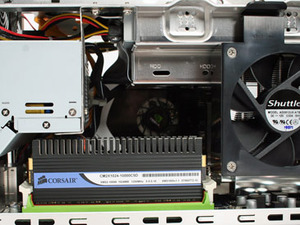
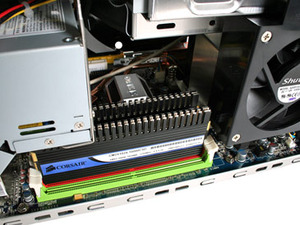
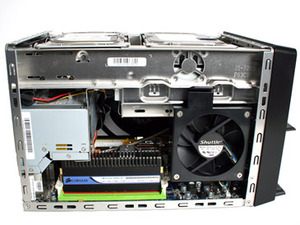
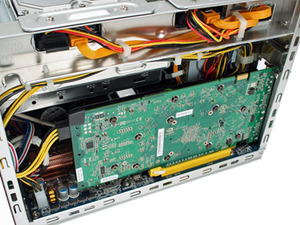
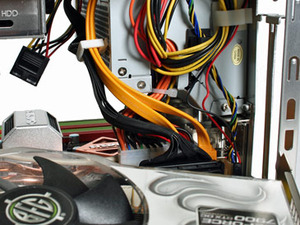








Want to comment? Please log in.